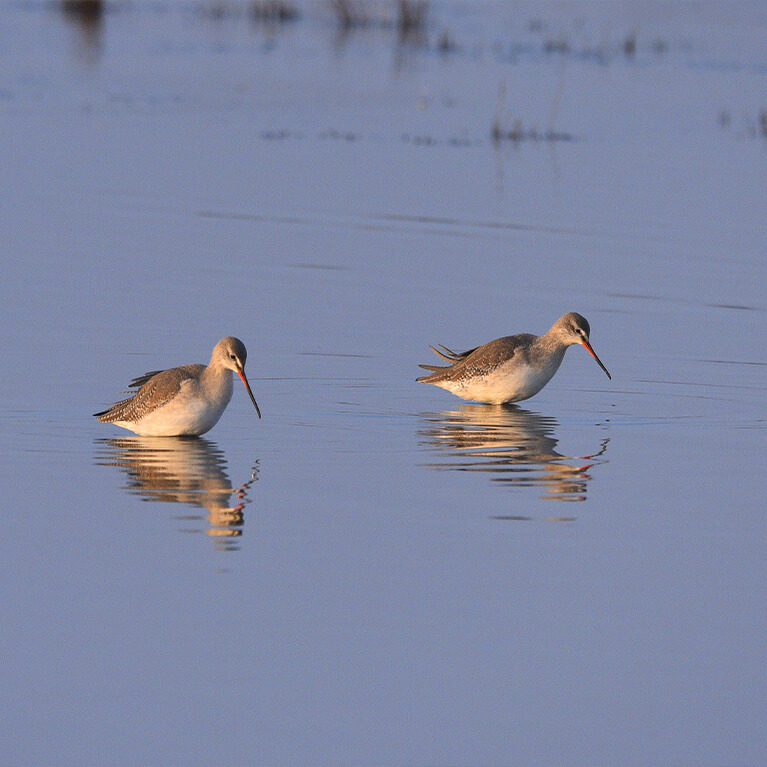Coast
Skegness was just a village in 1873 when local landowner the Earl of Scarborough decided that the popularity of the seaside could only grow, he commissioned plans for a ‘model watering place’ with wide, tree-lined streets on a grid system, promenades, gardens and a pier. The Earl was right, and when the Great Northern Railway Company commissioned John Hassall in 1908 to draw the ‘Skegness is So Bracing’ poster featuring the Jolly Fisherman, its success was secured. This most famous of adverts was to promote a special three-shilling excursion from Kings Cross. Skegness continued to make tourism history when in 1921 a poor travelling showman, Billy Butlin, set up his hoop-la stalls here. By 1929 he had opened a large amusement park and by 1935 had built the Butlin’s Holiday Camp.
There are coastal resorts that have come and gone. RSPB Freiston Shore is now home to thousands of migrating birds, but in the first half of the 19th century it was a popular seaside resort with visitors arriving by charabancs, at least two hotels and horse racing on the beach – now there remains barely a trace.
On this remote area of land beside the Wash was a former borstal, now known as HMP North Sea Camp. In the 1930’s the boys were set to work reclaiming land from the sea to create farm land. Using just basic hand tools and by building their own miniature railway track with tipping trucks for earth moving, they built a series of banks which by 1979 had reclaimed a staggering 650 acres. However their enthusiasm got the better of them and the final section had pushed out dangerously far out and couldn’t be defended, it came to be known by the prison as a ‘bank too far’.
As it had been discovered that saltmarsh diffuses the power of the waves more effectively than a seawall or bank, it was decided that to improve the flood defences the coastline at Freiston Shore would be realigned. This may sound wrong but a hole was cut in the seawall to let the sea in, this allowed the development of new saltmarsh, which better absorbs the power of the waves, in turn this would create a new reserve for wintering and breeding birds – win, win! Star species at RSPB Freiston Shore are Black-tailed godwit, Brent Geese, Hen harrier, Knot and Oystercatcher.
Lincolnshire’s Natural Coast repays visits across the seasons. This is a migration super highway so expect a constantly changing range of visiting birds; not necessarily a best time, just a whole series of brilliant opportunities. A thriving colony of grey seals arrive to give birth November to January, making for a noisy wildlife spectacle as around 2,000 pups are born at Donna Nook. The flowering and fruiting of the plant life adds another dimension and supports the vibrant bird and insect life. Those banks of sculptural sea holly and sea buckthorn with its vibrant orange berries are usually full of bird life and more, and it’s worth standing and staring a while just to see who calls this home. Sections of the National Coastal Path are in place and work is ongoing on completing the route – sometimes you will walk on the beach, at other times tucked behind the dunes in shelter.
As you walk or cycle along the coast look out for the fortifications built to protect Britain against German invasion. Begun after the evacuation at Dunkirk the ‘Coastal Crust’ as it was called, was designed as the first line of defence against invasion; it involved many types of structure, some of which can still be seen – pillboxes, searchlight batteries, anti-tank structures and machine gun posts. During the war gun emplacements were camouflaged as bungalows, ice-cream parlours or chicken sheds and linear marks bisecting fields are probably anti-landing trenches dug to prevent aircraft landing. Much survives along Lincolnshire’s coast as an evocative reminder of the desperate days of 1940. These concrete remains, even a pill box in a peaceful churchyard, are recent history and give the landscape added meaning.
The boxy indentation that is The Wash is probably the most recognisable part of Britain’s whole coastline, and yet so little known. A staging post for huge flocks of wading birds on their long annual migrations and the Boston Fishing Fleet can be seen on the mud flats at low tide raking for cockles. A boat trip out into The Wash from Boston is heartily recommended.




